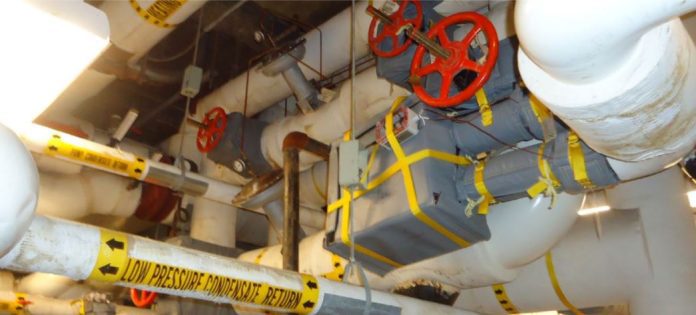Thingworx platform proves energy savings.
Steam systems are one of the largest energy consumers in the United States, making up almost 15% of the country’s annual energy usage. There exist 50,000 district and industrial facilities in the country. Pittsburgh-based Embedded Energy Technology is using PTC’s Thingworx platform to track the amount of energy saved using its product, according to a case study provided by Thingworx.
Large buildings, campuses and hospitals often have industrial steam systems that transmit a massive amount of energy. The steam systems are used for heating buildings in cold areas, cooling them via heat exchangers in hot areas and for sterilization of equipment in places such as hospitals.
“Insulation is placed on steam pipes that are radiating energy and over time it may be removed to replace a component, or it is ripped off and radiates heat into the environment,” said EET CEO P.J. Johns. “This can lead to the situation where excess energy is being used to convert water to steam, raising the ambient temperature of facilities often to intolerable levels. In many cases it’s like having the heat and the [air conditioning] on at the same time.”
The sale of the removable insulation jackets that allow maintenance teams to be able to remove a jacket, work on the component and then replace, is largely based on the energy savings numbers, and the company was being asked to prove how much energy was being saved. The engineers at EET developed a sensor that could be mounted along with the insulation to measure how much heat is being retained and provide insight into whether the component is functioning as intended.
Each sensor measures four temperatures: the inside jacket temperature, the outer jacket (touch) temperature, the ambient room or steam vault temperature and the component temperature.
These readings provide a picture of what is happening inside the component, and are displayed in a web portal that analyzes and presents to the user.
Savings visualized
“Initially we thought that we would need to hire a couple of developers and build something from scratch over the course of a year, but once we saw the ThingWorx platform we realized that we could skip that step,” Johns said. “The flexibility, and rapid application development tools, along with the look of the applications made it a much more practical proposition than building something from scratch.”
Customers are able to self-serve in terms of updating mailing lists for email or text alerts, or changing alert parameters, all of which was a manual process for EET in the past.
“It is a well thought out [internet of things] platform,” Johns said. “Every type of issue that we had run into or that we could think of had already been thought of in the design of the product and built in from the bottom up which was impressive. On top of that, getting something developed whether it be a mashup, a custom visualization or prototype applications such as monitoring battery drain, are all fast to develop and don’t require a programming background to accomplish.”
According to the case study, Johns’ vision is the portal becomes a one-stop shop for their customers.
“We want them to log in, be able to check their sensors and have the portal become their default platform as we add more inputs and sensors to provide a wider range of information,” Johns said.

